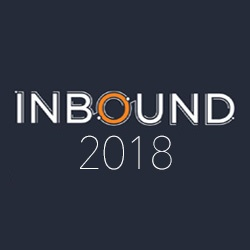In a double-header keynote at Inbound 2018, the co-founders of HubSpot — CEO Brian Halligan and CTO Dharmesh Shah — made the familiar concept of customer experience sound new again.
Marketing buzzwords have a short shelf-life. The more people talk about CX, the more it sounds like a hollow panacea; a catchy label for what brands do anyway. As Shah said, “It’s trendy to say ‘We’re customed-obsessed.’ The truth is, a lot of companies are company-obsessed.” The same goes for “customer first,” which too often means “customer eventually,” and “customer-centric,” for which he coined a new opposing term, “customer-circumfic” (although “circumferential” actually is a word). And HubSpot itself isn’t free from fault, he added.
But there is substance to CX. Even brands which are producing and selling basic commoditized items are increasingly competing on experience, not on product and price. The good news, said Shah, is that it’s often easier to improve CX than to improve product.
Friction is the enemy
What does this mean in practice? For one thing, it means recognizing that there are fatal cracks in what Halligan called “Ye Olde Funnel.” For a long time, marketing — and especially inbound marketing — has crowned content as king. In the last two years, said Halligan, that’s changed. Word of mouth is now supreme. Trust is breaking down, not only for hallowed institutions, but for sales and marketing. Other customers are the only people customers trust, which means — think of the funnel — customers need to be treated as input, not output. “The funnel,” said Halligan, “is a broken metaphor.”
Halligan’s Flywheel
It’s one thing to scrap the funnel, but what replaces it? The flywheel, said Halligan — an engineering construct at the heart of the original steam engine (google James Watt). But don’t worry, it has contemporary applicability.
Attract >engage > and delight is the new, ever-spinning mantra. According to Halligan, “attract” reflects the traditional marketing responsibility of reaching potential customers. “Engage” corresponds to the period when engaging inbound prospects with content was the key to success. Those elements are still important, but the main task now is to “delight” the customer — to provide not just a good product, and relevant content about it, but a great experience curated in an environment of trust. That’s where the greatest force needs to be applied if the flywheel is to spin fastest.
The enemy of that force, as James Watt well knew, is friction. Halligan listed brands who are winning, not because the commodity they sell is unique, but because they make access to it frictionless: Lyft, Warby Parker, Spotify, Dollar Shave Club. Companies which get this right are not primarily trying to “close” customers: “They’re trying to delight them.” And they’re doing that, not by trying to make the product ten times better, but by making CX “ten times lighter than the competition” (an observation which, unusually, drew spontaneous applause from the audience).
Big consequences
If brands are willing to embrace the reduction of friction as a key goal, some startling consequences seem to follow. For one thing, it might mean embracing a future which is 80 percent (Halligan’s estimate) self-service. What follows from that, he said, is that the time will come when 80 percent of IT investment should be aimed, not at making employees more efficient, but making customers more efficient.
“This is where the world is going,” he said. “Follow.”
When did you last meet a customer?
The keynotes by Halligan and Shah made sense to me, but for validation I ran some of the thinking past Kevin Cochrane, CMO of SAP CX, and a guest speaker at the conference.
“The very same people who are now customer obsessed and customer first are the very same people who five years ago decried customer experience and laughed at it. The first practitioners of customer experience actually knew what it meant to put customers first, to listen to the voice of the customer, and to have a passion to get the enterprise to do something differently. At the end of the day, customer-centricity is not about you [the brand], it’s about them.”
There are still brands who don’t get it. “They think customer experience is a beautiful website or a beautiful app.” But Cochrane’s perspective differed on how easy CX is. “You can update your product in six months, twelve months. Customer experience is a multi-year transformation; it’s much bigger. A lot of people don’t get it, but I’m glad the co-founders of HubSpot do, which is why this is such a fantastic event.”
One last point. “If you meet someone who claims to be customer obsessed, ask them what was the last time they met a customer.”
HubSpot covered DMN’s expenses to attend Inbound.








